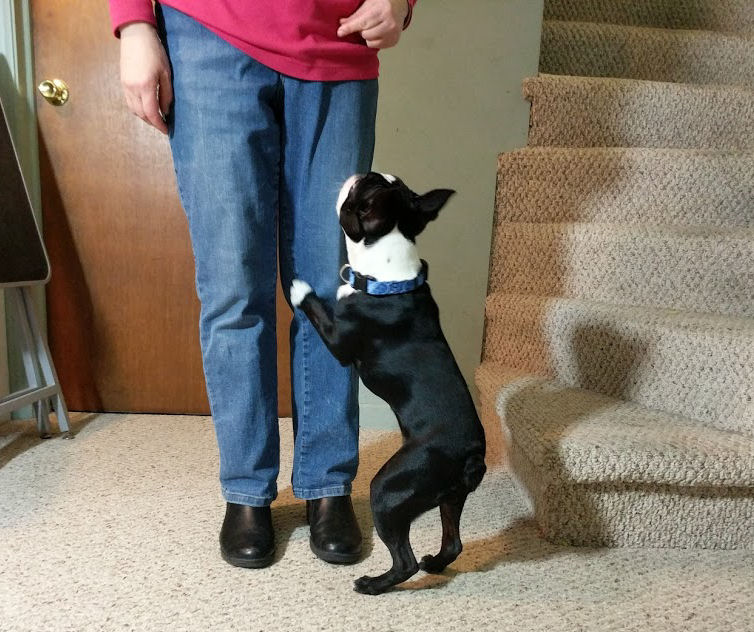You have to watch your words in dog training. What you say to your dog matters. Dogs are capable of understanding hundreds of words – as long as we’re clear on the meaning of those words.

Think about it. If you say “sit down over here!” it’s a perfectly fine English sentence – if you’re talking to a human being. To a dog, it’s possible you just gave three different commands; sit, down, here. Which one is the dog supposed to obey?
If your dog doesn’t instantly obey, or even looks confused when you tell him/her to do something, replay what you actually said. Were you clear in your instructions, or did you inadvertently say something like “sit down?”
Words in dog training have unique meanings
It’s true that dogs can understand many words. But they’re unable to assign more than one meaning to the same word. Dogs are binary creatures, yes or no, good or bad, this or that.
The example most people are guilty of confusing their dogs with is “down.” When you want your dog to relax on the couch, what word do you use? For most, it’s some version of “lie down.”
That’s fine. It’s the proper use of the word. Traditionally in obedience, “down” means lie flat on the floor.

How many times has your dog jumped up on something or someone and you said “down!” Don’t feel guilty. Everybody does it. It takes conscious thought and a decision to change to use the word you really mean – “Off!”
Some of our clients/students seem to think we’re being too nit-picky when emphasizing these small differences. But the variations are minor only if you think like a person. If you think like a dog, you get confused.
Confusion gets in the way
If you’re training your dog for competition in any dog sport, from traditional obedience to free-style dance, it’ll be easier and faster if you’re precise in your word use.
Be sure the words you use have only one meaning and that you convey that meaning clearly to your partner. Remember, your dog isn’t a native English speaker – you’re teaching him/her a foreign language. If your dog seems confused in a 2-Minute Training session, that’s probably exactly what’s happening.
If you’re not sure exactly what you said, and there’s no one else around to watch, this is another time it’s valuable to record your sessions. Watch and listen to your sessions, especially ones where your dog exhibited confusion by turning away, disengaging, or getting distracted. Pay special attention to what you said or did immediately before that happened. Did you accidentally confuse your dog?
Some dogs are particularly concerned with getting things “right.” When confusion hits, they disengage rather than make a mistake. This reaction is normal for some dog personalities – just like some people are more willing to make mistakes than others.
Tone matters, too
We used to think that you could say any words when talking to a dog. As long as your tone was kind, you could get away with saying horrible things. Depending on the dog, that’s not true. Dogs actually are capable of understanding the definition of several hundred words. No matter how you say it, they’ll know “no” isn’t a good thing. We’ve talked about clarity before in turns of tone and the word “no.”
In order to keep your dog happily engaged, use a less judgemental word to indicate a “flub.” We use “oops” – you can never sound anything but silly when you say it.







One thought on “Watch your words in dog training”
Comments are closed.